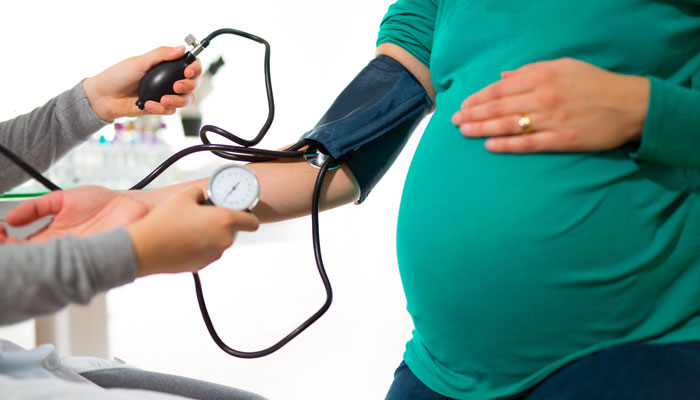
Preeclampsia in Pregnancy
Pregnancy changes a woman’s body in many ways. Most of these changes are normal, if uncomfortable at times. Swollen extremities, such as hands, feet, or legs, are common. These symptoms, coupled with high blood pressure though, may be a sign of preeclampsia.
What Is Preeclampsia?
Preeclampsia is the name for what happens to pregnant women when not enough blood is reaching the placenta. This creates more stress on a mother’s body, raising her blood pressure and causing a host of other symptoms.
Some symptoms of preeclampsia include:
- High blood pressure
- Swelling
- High levels of protein in urine
- Rapid weight gain
- Headaches
- Dizziness
- Frequent or excessive nausea and vomiting
- Abdominal pain
- Change in vision and reflexes
Preeclampsia can develop into eclampsia. Eclampsia is very serious for mother and child, potentially causing death. Eclampsia is marked by seizures in addition to preeclampsia symptoms.
What Are the Risks of Preeclampsia?
With an insufficient amount of blood reaching the placenta, and thus the baby, the risk is high for a premature birth. Babies whose mothers suffer from preeclampsia are often born very small. There is also an increased risk of learning disabilities, vision problems, epilepsy, and cerebral palsy in the child. A rare but serious effect of preeclampsia is placental abruption, which can cause stillbirth. There are a host of risks for expecting mothers as well. The serious complications in mothers include stroke, seizure, heart failure, water in the lungs, and excessive bleeding after pregnancy. Women who are at high risk for preeclampsia:
- Have a history of high blood pressure.
- Have a family history of preeclampsia.
- Are carrying more than one baby.
- Have a history of lupus, diabetes, or kidney disease.
How Is Preeclampsia Treated?
The most effective treatment for preeclampsia is delivery of the baby. Mothers who are close to term can have labor induced and their symptoms will go away within a few weeks. Depending on the severity of the condition, a doctor may prescribe a variety of treatments:
- Bed rest
- Blood pressure medicine
- Anti-seizure medicine
- Blood and urine tests
- Steroid injections to promote the development of the baby’s lungs
- Magnesium injections
- Close mother and child observation
In extreme cases, a doctor may induce labor, even if the pregnancy is not close to term, to save the mother’s life. Preeclampsia can be a serious condition. By being informed, listening to your changing body, and communicating regularly with your doctor you can keep you and your baby healthy.
